This post is also available in:
 Deutsch (German)
Deutsch (German)
An artist amazes visitors with her political embroidery works: Varvara Sudnik is the youngest here in the group exhibition ANTIKÖRPER. The 20-year-old deals with social issues in her homeland that others easily overlook, as she says. The fact that she and six other artists from Belarus are coming together for the first time in Hamburg is already a small sensation. WESTWERK made it possible. A year has passed since the violent protests in Belarus against ruler Lukashenko – “Europe’s last dictator”. The horror images of police violence and torture have disappeared from the news. Therefore, one could be curious to see how artists deal with life in Belarus today.
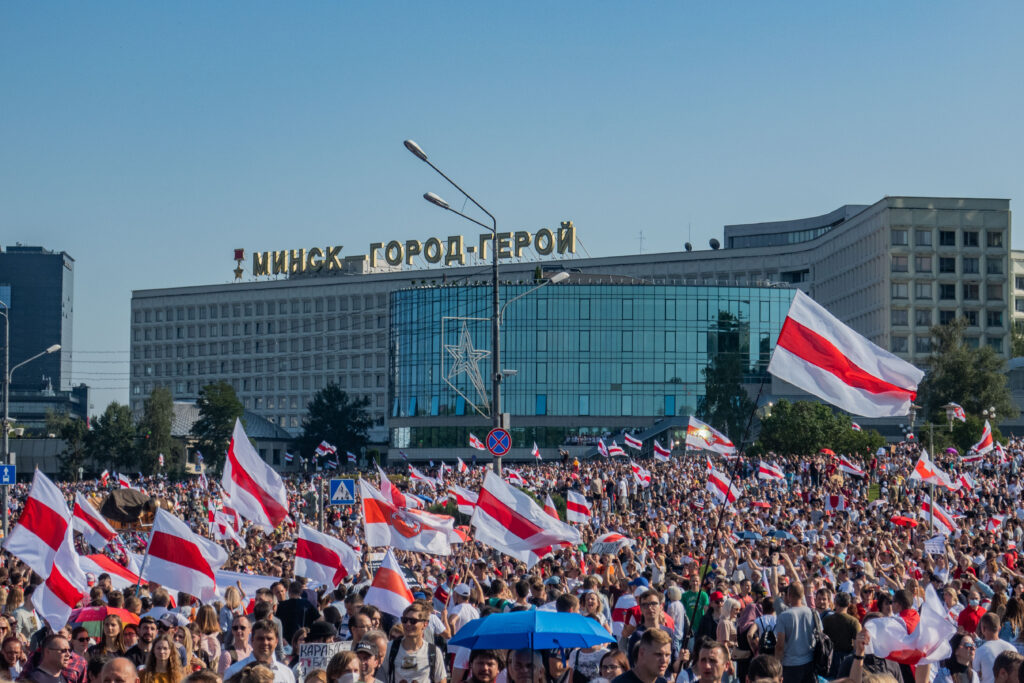
About Varvara Sudnik, curator Kristina Savutsina says, “I find her work super-exciting, enigmatic, and at the same time very direct-just like Varvara herself.” At WESTWERK, Varvara had time for me and photographer Hervé Dieu before her flight home.
5 Questions for Varvara Sudnik
What is the situation like in Belarus at the moment? How do you deal with it artistically?
Varvara Sudnik: “First of all, I don’t feel protected enough to talk about it, and secondly, there are enough other artistic positions that deal directly with the protest movement and that also say more about it, and also human rights organizations that report and talk about it – and I, in my art find it important to talk about other issues that get lost because of this attention to the daily political situation. Among other things, that’s the Corona situation or labor relations and pay as issues.”
Let’s take the issue of labor relations. What exactly is your topic there?
Varvara Sudnik: “In Belarus, working conditions are problematic, it concerns finding a job and working conditions – many people have to work a lot, do several jobs, work overtime to ensure basic needs – yet they can’t even secure quality housing through that. I am not even talking about vacations. It’s about oneself, and it’s about keeping one’s children and family afloat.
For example, I’ve worked in the service industry myself, I’ve had two jobs in service. To do that, I did these three smaller embroideries that are placed right there on the front of the table. That’s the series that deals with that: It’s very poorly paid, people have to work 12, 14 hours, and they don’t get any dignified recognition for that, either from the employer or from the people who then receive that service.”
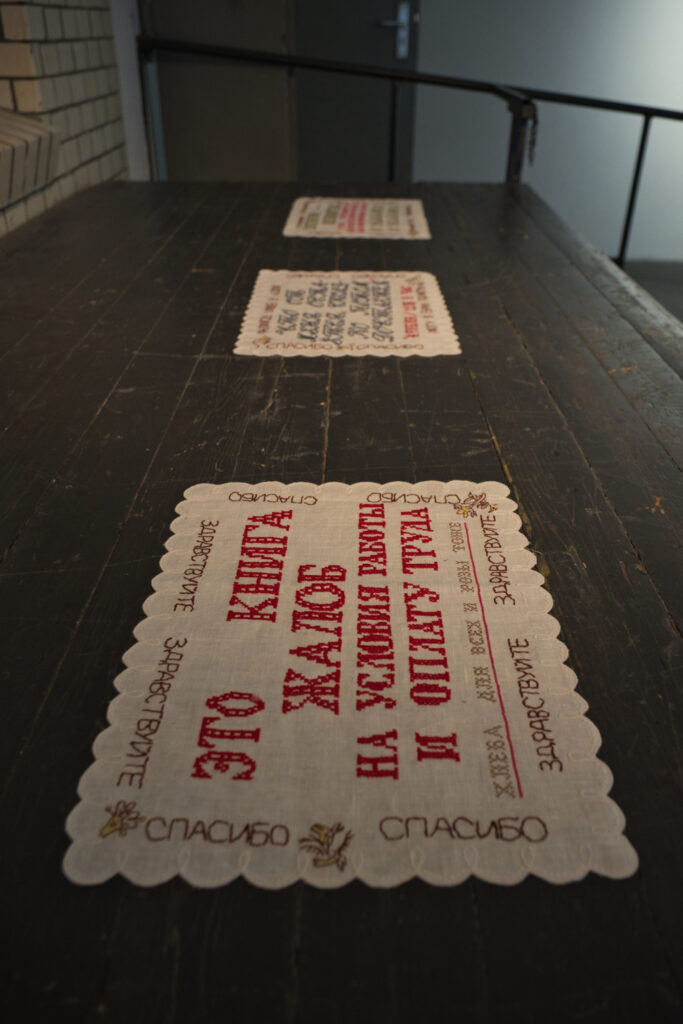
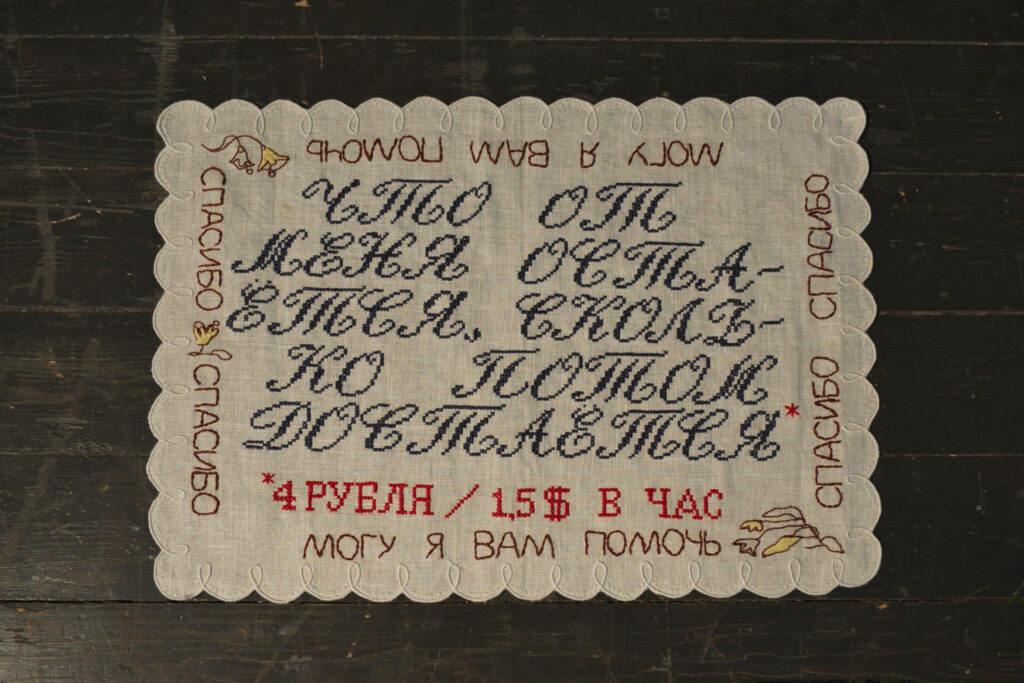
“I find her work super-exciting, enigmatic, and at the same time very direct – just like Varvara herself.”
– Kristina Savutsina, curator
Since you chose embroidery as your material and technique, what’s the reason?
Varvara Sudnik: “I have not been working with embroidery for a long time, only for about half a year, I just realized that other media are just not so accessible – because of financial issues or because of my skills, for example, in terms of video or digital art – then you would have to have more knowledge or appropriate training and also the technique, and that was not accessible to me. Embroidery was just accessible and available as a resource – and also I just like working with it because it feels so tactile, and because it’s very small-scale. It’s also a return to craft, and it’s also a reference to Female Art, art by women.”
How do you develop your ideas, what is the artistic process like?
Varvara Sudnik: “In terms of ideas and choice of subject matter, I work as if I were patching clothes, that is, patching a hole in clothes. Patching these holes means dealing with topics that others talk about little or not at all. Or about which people are silent, for various reasons, because it’s not appropriate to talk about conditions in public toilets, for example, or it goes down for other reasons. But people feel it, people deal with it a lot in their everyday lives, whether it’s with working conditions or with toilets.
Because I haven’t been doing this for so long, I can never estimate how long a work like this will take, for example the work on public toilets – I had planned to finish that much earlier, and it only finished this Monday. And I improvise a lot in the process.”
“Embroidery is also a return to craft, and it’s also a reference to Female Art, art by women.”
– Varvara Sudnik, artist from Belarus

A note about the public toilets: The conditions in these toilets are sometimes miserable, as Varvara explains. The sanitary facilities are run-down, sometimes there are simply toilet bowls next to each other, without partitions to protect them from view. The subject is unappetizing, and therefore people keep a shameful silence about it. Therefore, in the eyes of artist Varvara Sudnik, going to one of the public toilets in Belarus is undignified and filled with shame, especially for women. These conditions have to do with negligence, low finances, and the low standard of living in parts of the country. On the embroideries you can see or at least guess how these toilets look like without walls and without doors.
How do you feel about your future? What is next for you?
Varvara Sudnik: “I find it difficult to imagine my future. Because being an artist doesn’t bring me any privilege or money. And all the time I think back and forth whether I want to and should continue doing this. And I basically want a better quality of life and also a living to survive with my family. That’s why it’s always going back and forth in my mind whether I want to continue doing this art, which is also related to social issues.”
Thanks to curator Kristina Savutsina for translating the interview.
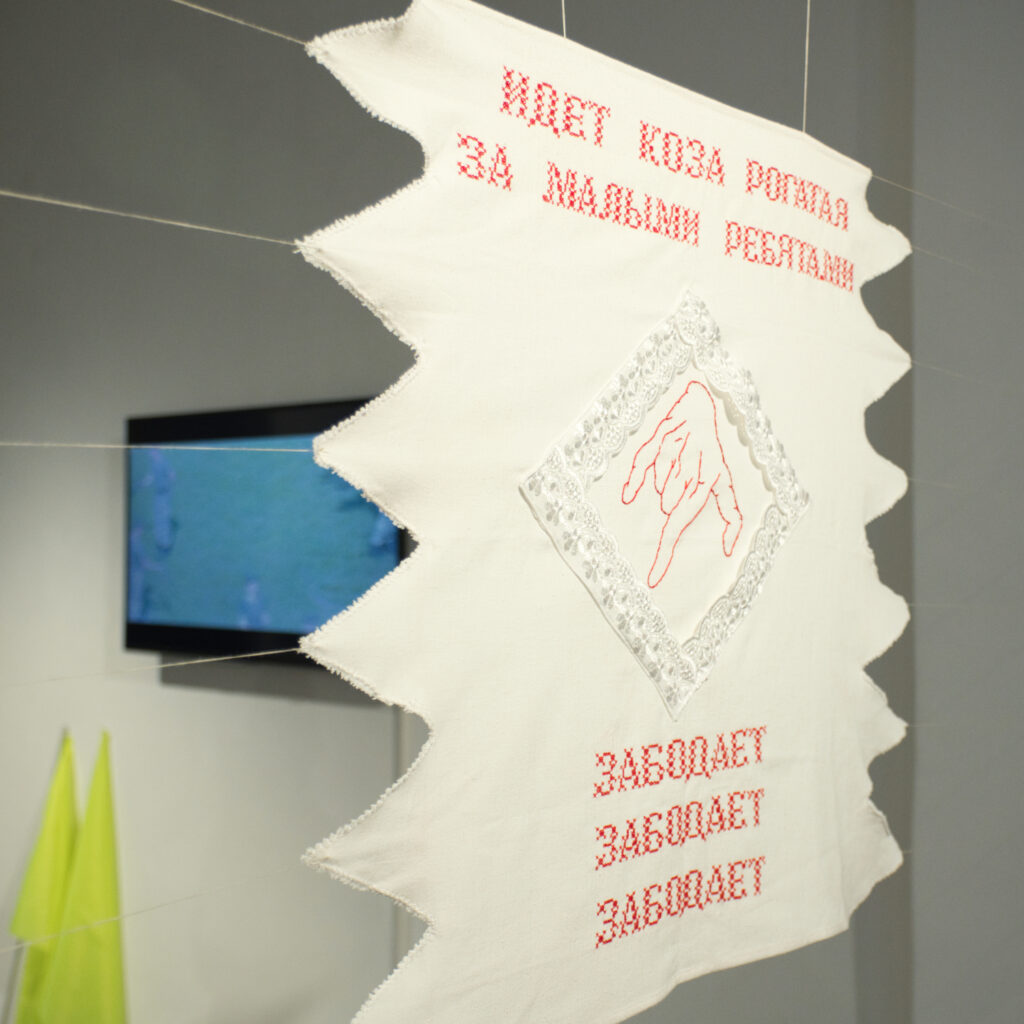
“I find it difficult to imagine my future. Because being an artist doesn’t bring me any privilege or money.”
– artist Varvara Sudnik
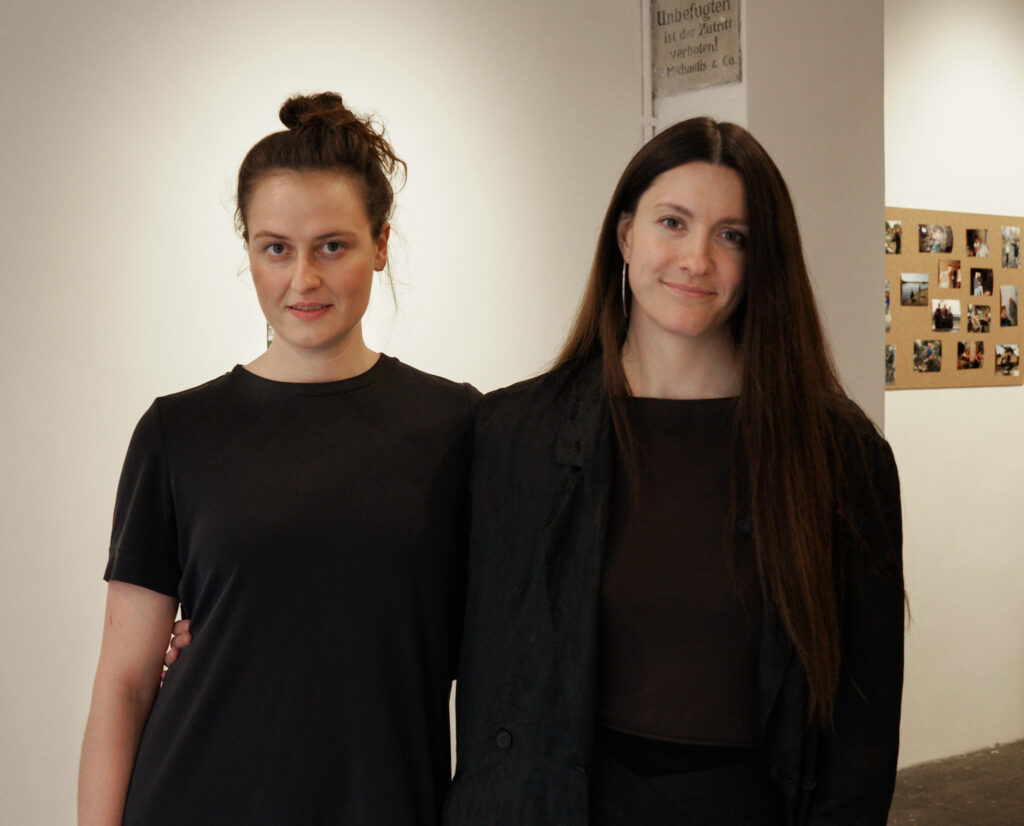
Antikörper Program:
Young art from Belarus. Group exhibition, WESTWERK.
Link to Westwerk with more information:
Link to Homoatrox, Minsk – Wikimedia Commons, CC License
https://commons.wikimedia.org/wiki/User:Homoatrox
Author: Kay Dethlefs
Email: mail@hamburgarts.de

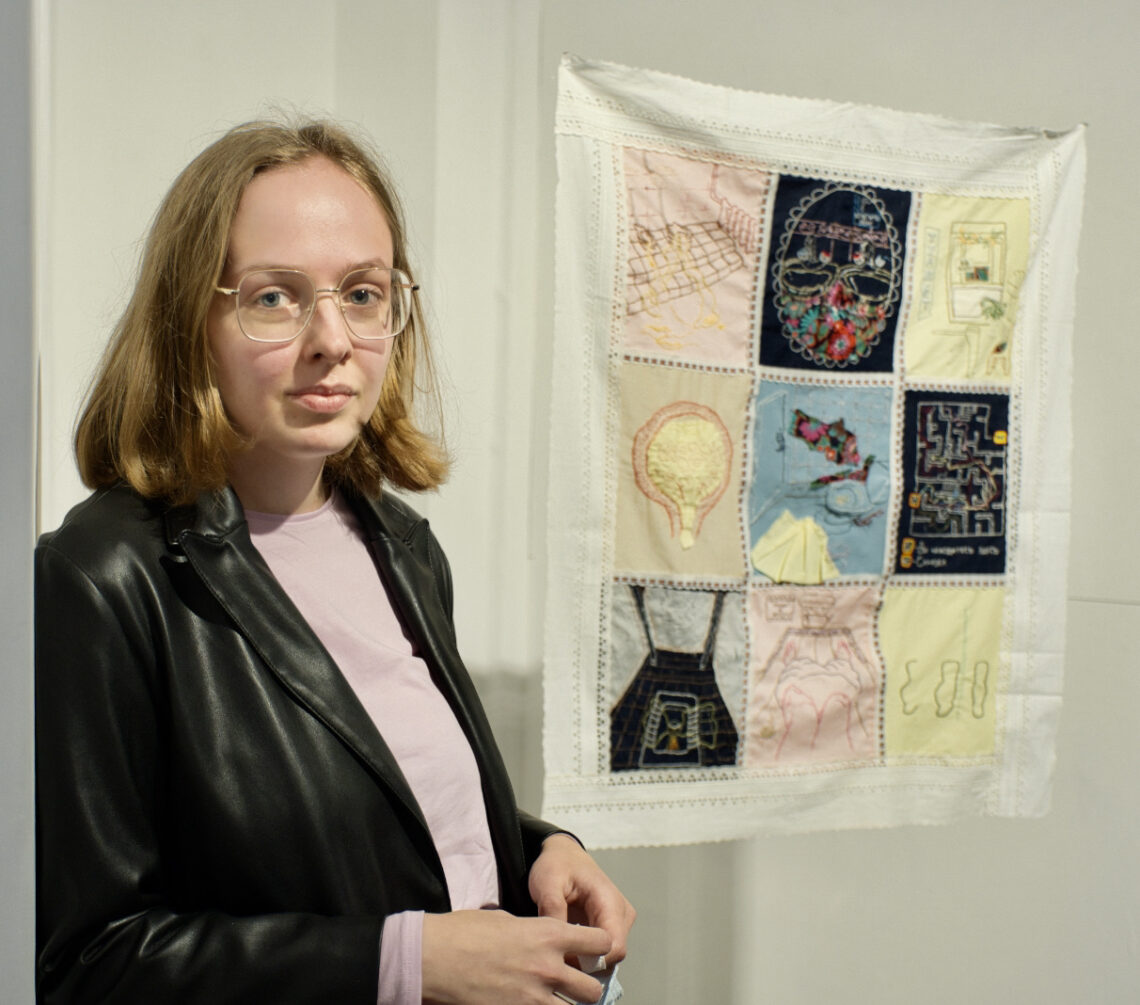

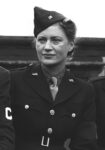
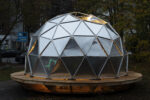

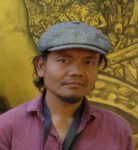
Comments by Kay Dethlefs